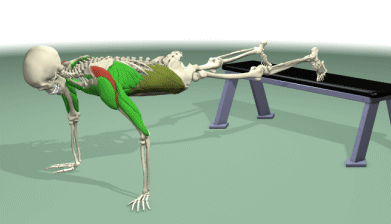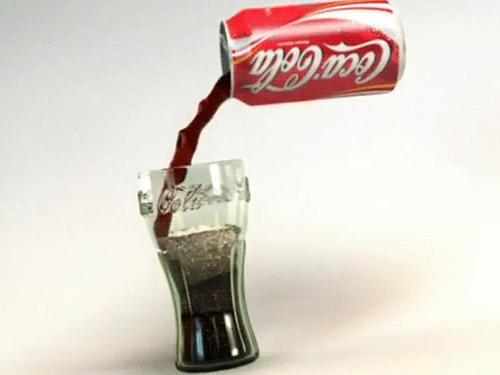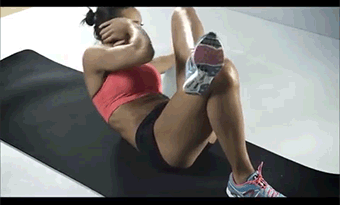




THE FITNESS
DIGEST.
You don’t want to spend long hours at the gym, but you want to get stronger, fitter, leaner, and just plain look good. It’s possible that you’re not getting the most out of your workout time.
This plan is especially intense, so if you have a heart condition or other condition that might be affected by heavy exercise, you should definitely refrain from trying it until you’ve gotten checked out by a doctor.
And even if you have gotten checked out, or even if you don’t bother doing so, it’s still important to start out an exercise program slowly, until your body has the chance to adjust, or you will face burnout or injury.
Don’t dive right into this program — it’s designed for people who have already been working out but want to see better results, quicker, and spend less time doing it. Here’s how to do it.
1. Limit your workouts to 30-40 minutes.
Though the tendency of some people who really want to get a lot out of their workouts is to spend a lot of time at the gym, the truth is that after 30 or 40 minutes, the benefit isn’t as great. To go that long, you’d have to lower the intensity of the workout, and that means that you’re spending too much time working out. It’s better to work out at a higher intensity for a shorter amount of time.
2. High-intensity workouts
If you’re just starting out with exercise, it’s best to take it slow. If you’re running or cycling, for example, build up your endurance for at least a month before you get into anything more intense. That means going at a rate where you can easily talk without being out of breath. However, once you have that base of endurance, step up the intensity to step up the effectiveness of the workout.
3. Protein.
Many people don’t pay enough attention to getting the protein their muscles need to rebuild. If you don’t, you are going to get very little out of your workout, as both cardio and strength workouts require protein for building muscles. I recommend either whey or soy protein shakes.
4. Water.
Be sure to hydrate throughout the day. It takes a couple of hours for your body to absorb the water, so you can’t just drink right before exercise. Make it a habit to drink water regularly throughout the day.
5. Carbs.
Although the low-carb craze might say otherwise, carbs are our body’s main source of fuel. If you do intense workouts, you will need carbs, or you won’t have enough energy. If you do a shake, be sure to include carbs — a banana is a great source of low fiber/high glycemic carbohydrates that you need for exercise.
6. Shake before and after workout.
It’s best to take a protein/carb shake just before your workout and then just after. Taking it before your workout increases the flow of amino acids to your muscles during training, giving them the building blocks they need. After the workout, the shake stimulates muscle growth. Also take a small protein/carb meal 60-90 minutes after a workout — a meal replacement bar would work fine.
7. Slow lifting.
Many people contract their muscles slowly and then release more quickly. But if you move slowly in both directions, you are maximizing each move. Lift and lower to a 5-second count in each direction.
8. Heavier weight.
When you’re starting out, it’s best to start with lower weights so you can focus on good form. But once you’ve gotten your form down, it’s best to lift the heaviest weights you can lift while still keeping good form. Don’t sacrifice form for heavy weights — that is ineffective. But heavy weights, with good form, can give you better results in a shorter amount of time. Heavy weights are not just for those who want to bulk up — that’s a common misconception.
9. One set, to failure.
Instead of doing 2-3 sets, as many people do, maximize your effectiveness by doing just one, with heavy weights, until you can no longer keep the proper form. Lifting to “failure” doesn’t mean that you should lift the last few times with a wobbly or inefficient form.
10. Compound exercises.
Instead of isolating your muscles with exercises such as the bicep curl, you can maximize the time you spend in a workout by doing exercises that work out multiple muscle groups at once. With just a few exercises, you could get a full-body workout. Another benefit is that your muscles are working together as they do in the real world, rather than alone. Some great compound exercises include squats, deadlifts, good mornings, lunges, pushups, bench presses, military presses, rows, pullups,and dips.
11. Balance lifting.
Instead of having exercises where you’re sitting down or holding on to something or otherwise stabilized, it’s more effective to do them standing up, or on one leg, or on a Swiss exercise ball. These types of exercises force you to balance yourself while lifting, which brings your core muscles into play. This gives you a stronger overall body and allows you to lift more over time.
12. Pick a cardio exercise you enjoy.
It’s no fun to exercise if you hate it. And you won’t keep it up for very long. Pick something that’s fun — running, walking, swimming, biking, hiking, rowing, stairmaster, etc. After the initial phase when you’re getting used to exercise, you’ll start to have a blast and look forward to it.
13. Mix it up.
Don’t stick to the same workout routine for too long, or your body will adjust to the stress level and you won’t be getting an effective workout. For strength training, change your routine every few weeks. For cardio, it’s best to cross train rather than, say, to run every time.
14. Good form.
For strength training especially, and swimming, form is very important, but it’s also important for other types of exercise. If you’re strength training, start with lighter weights so you can work on your form. It’s good to have an experienced spotter or trainer who knows good form to help you for the first month or so. Never sacrifice form for heavier weight. For swimming, you’ll need to get a coach to teach you form.
15. Hills.
If you run or bike or walk for cardio, you’ll want to incorporate hills (after the first month or two of doing it at an easy pace on flat ground). These will make you stronger and make your limited workout time even more effective. Take them easy at first, but once you’re used to hills, you can get a good pace going. Either use a hilly route or do repeats on one hill.
16. Circuits.
One mistake that people make is to do multiple sets of the same exercise without rest between the sets. This doesn’t allow your muscles to recover and it’s a waste of your workout. But instead of doing a set, resting, and then doing your second set, it’s more effective to move on to multiple exercises in a circuit, so that you don’t rest between exercises but do rest each muscle group. This will give you a good cardio workout while you do your strength training.
The ideal workout plan
If you take all of these tips into account, the ideal plan would be to alternate 2-3 days of high-intensity strength training with 2-3 days of high-intensity cardio. You could get by with 4 days of exercise if you do them at high intensity.
The high-intensity strength training would be 30-40 minutes of circuit training, with no rest or little rest between exercises within a circuit, and a short rest between circuits if you do more than one. The circuit should work out your entire body, using compound exercises such as the squat, deadlift, pullups, good mornings, etc., and either standing or using a Swiss ball so that you are working out your core.
You should use heavier weights, one set for each exercise, doing them slowly (5 second up, 5 seconds down), and to exhaustion, making sure to have good form on each exercise.
You would have a protein/carb shake before and after the workout, and a small meal of protein/carbs within 60-90 minutes of the workout. Water is also important for both types of workouts.
The high-intensity cardio would be something you enjoy doing. You would do interval training, at a rate where you couldn’t talk, with short rests in between intervals. On some workouts, you would incorporate hills.
Remember, these high-intensity workouts are not for people just starting out. You should build up an endurance base before doing the high-intensity cardio, and start the weights with lighter weights, stressing good form.


Effective Workouts
Physical fitness Disclaimer and Waiver of liability:
Exercises are not without their risks and the exercise programs in this website may result in injuries.Any person who undertakes these exercises does so at their own risk.To reduce the risk of injuries ,you should consult your doctor before beginning these or any other exercise programs.As with any exercise program ,if at any point during your workout you believe conditions to be unsafe or begin to feel faint or dizzy,have physical discomfort or pain, you should stop immediately and consult a physician.
Daily exercise for Working women.
Jumping Jacks. . Effective workouts.
Group exercise and its benefits.
Calf raises-free style . Push ups.
Tummy exercises. Hoola Hooping .
Fitness Motivational tips. Barbell Squauts.
The myths of spot reduction. Leg press.
Standing calf raises. Concentration curls.
Bench (Tricep) dips.. One arm dumbbell rows.
Pec deck Flye. Fr0nt dumbbell raises. Glute ham raise.
Seated leg curl . Close grip bench press .
.

Please keep comments positive and constructive.
Help the WEBSITE by reporting inappropriate comments to thefitnessdigest@gmail.com . Inappropriate comments may be reported and/or removed.